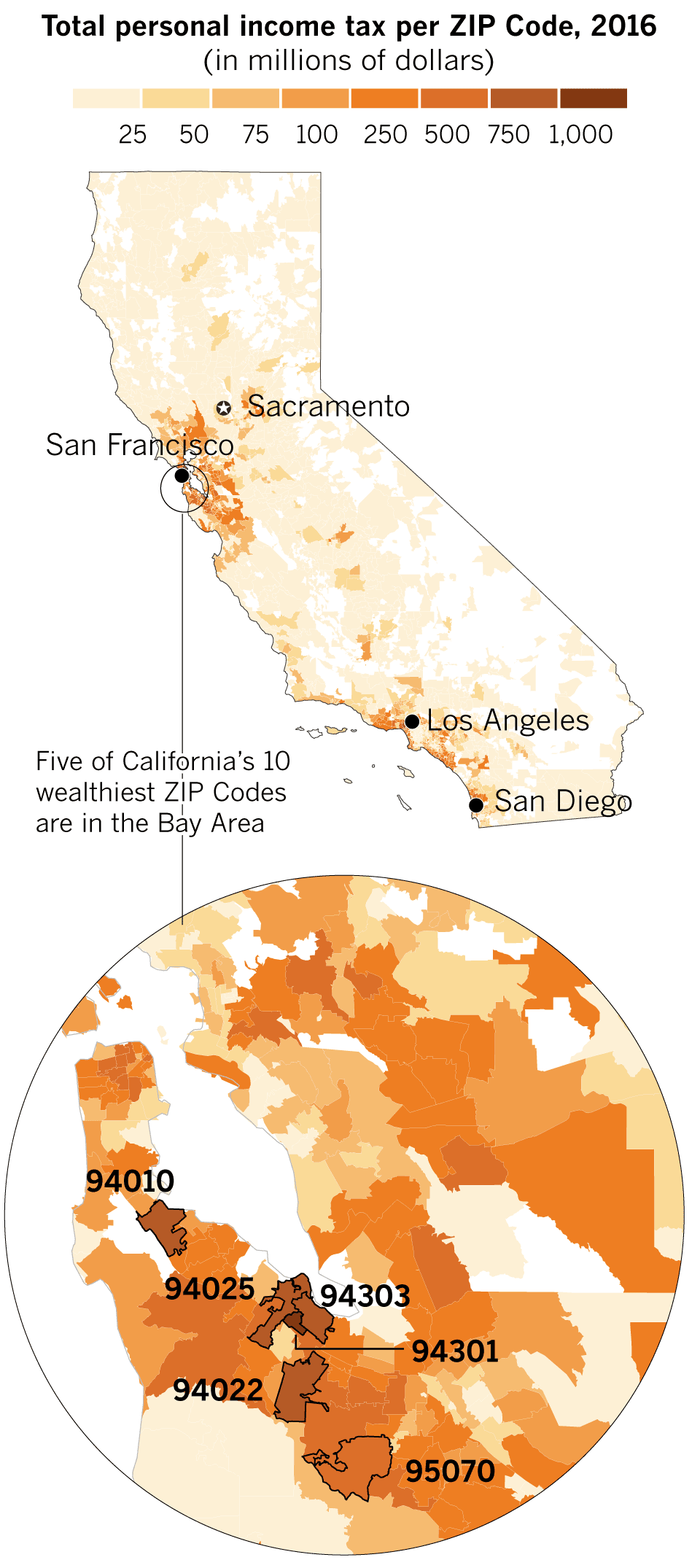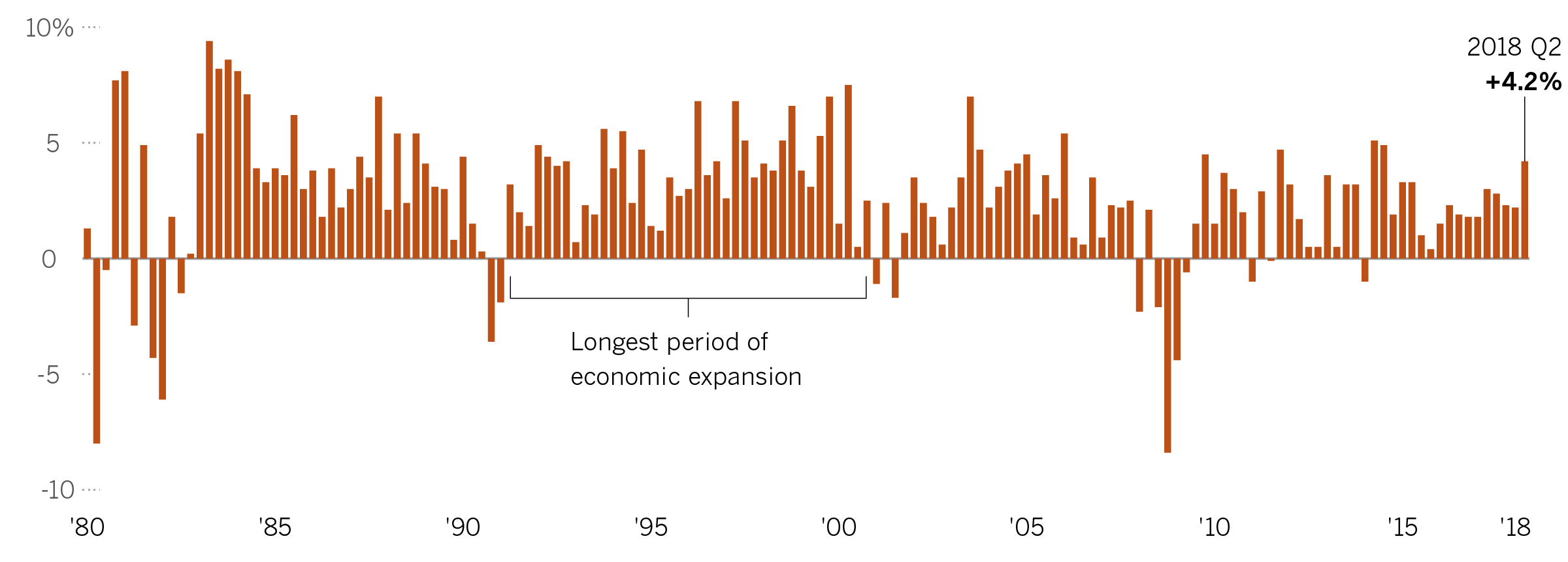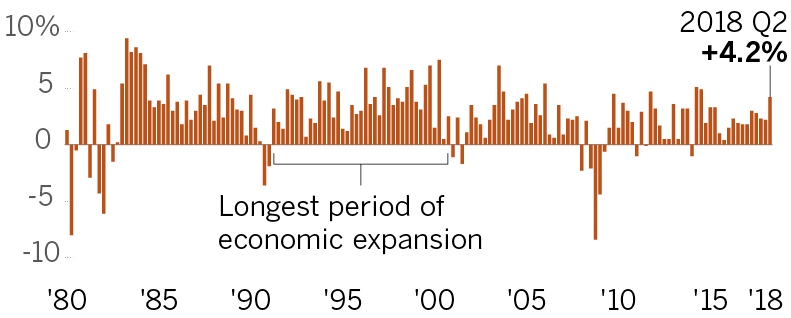The “birthplace of Silicon Valley” sits in Palo Alto’s 94301 ZIP Code — a wooden Craftsman one-car garage where 80 years ago the technology behemoth Hewlett-Packard was formed. Palo Alto has been seen as a technological vanguard ever since, a futurist playground brimming with programmers and engineers pioneering the next big breakthrough.
But it’s not technology that will give the ZIP Code outsized influence on the next governor of California. It’s taxes.
While Democrat Gavin Newsom and Republican John Cox campaign on their visions for the state’s next chapter, it’s the financial success of residents in Palo Alto’s 94301 and a handful of other affluent ZIP Codes that will determine whether promises to build more houses, overhaul healthcare or invest in schools can actually be kept.
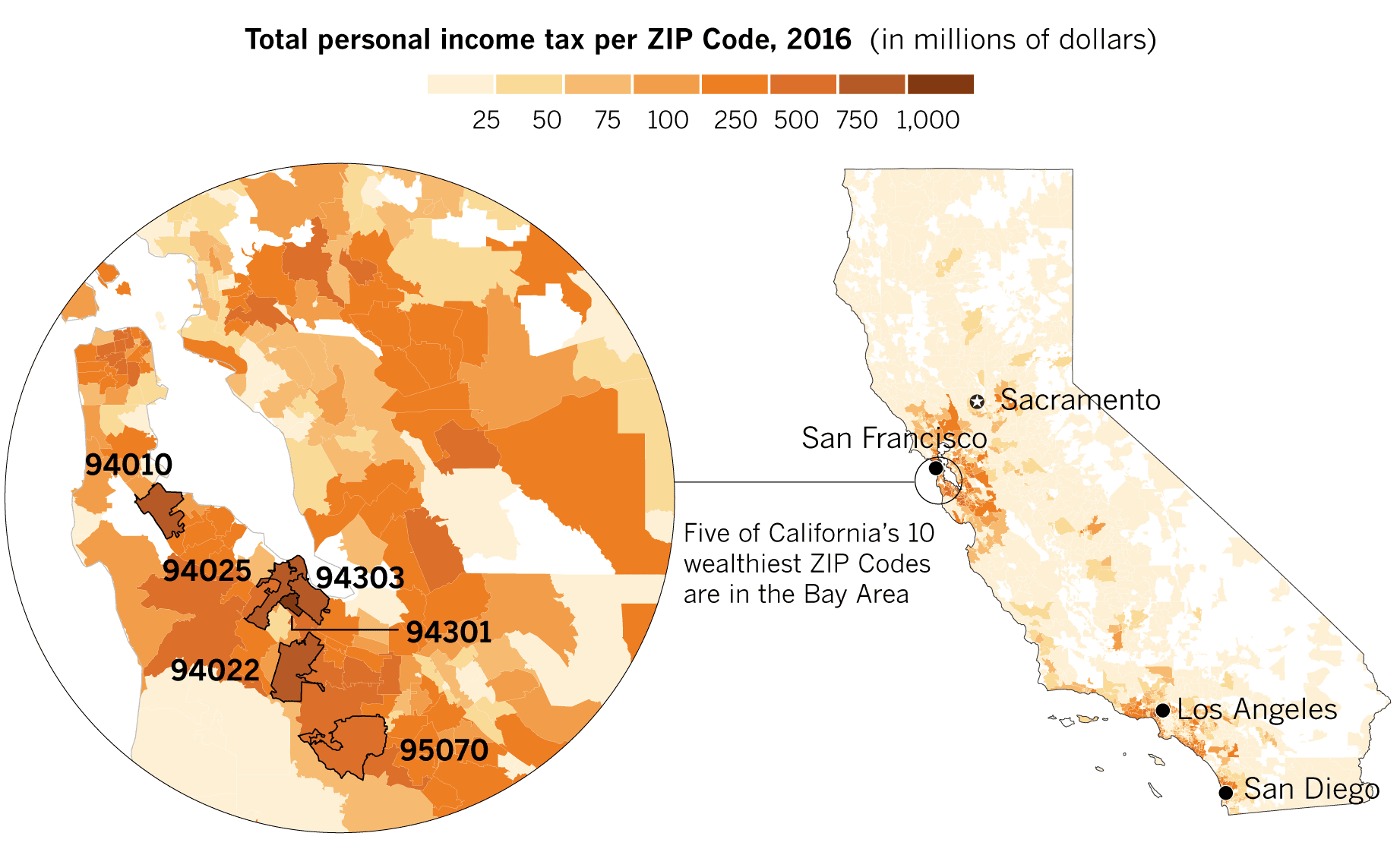
The state scooped up just under $1 billion from nearly 9,000 tax returns filed in 94301 in 2016 — more revenue than from any other ZIP Code in California.
Much is made of the widening gap between California’s very rich and very poor. But just as significant is how the fate of the latter depends heavily on the former.
| Rank | ZIP Code | City | Personal income tax |
|---|
“We are very dependent on millionaires,” said Mike Genest, former budget director for Gov. Arnold Schwarzenegger. “If the millionaires get a cold, we all die of the flu.”
Residents in that single Palo Alto ZIP Code paid 28 times more in taxes in 2016 than all those living in Tehama County, 200 miles northeast of Palo Alto in the heart of California’s northern forests.
Tehama feels worlds away from Silicon Valley — the kind of place that exports walnuts and black olives, not a buzzy new app or revolutionary gadget.
So long as the taxpayers of Palo Alto are thriving — as they are now — their tax dollars help fund government programs in Tehama and other less prosperous areas of California.
Economists and politicians have long said that California’s volatile revenue base leaves the state at risk for a painful budgetary reckoning when the economy slumps. But there’s been little incentive to change the system as long as California’s economy booms. And the political risks of revamping the tax structure have so far proved more intimidating than the prospect of recession.
At the unveiling of his final budget proposal in January, Gov. Jerry Brown was asked what challenges could await his successor. Without hesitating, the governor predicted the state’s current economic fortunes would take a turn for the worse.
“What’s out there is darkness. Uncertainty. Decline and recession,” Brown said, reveling in his pessimism. “So good luck, baby!”
And while indicators show few signs of imminent collapse, that’s hardly enough to protect the next governor from a budgetary abyss. All it would take is for the wealthy in Palo Alto, Beverly Hills or Atherton to come down with the sniffles.
A rosy future?
On a sunny Tuesday afternoon, University Avenue, Palo Alto’s main commercial drag, is thrumming with activity and affluence.
Stylish fast-casual restaurants sling take-out for workers of nearby “innovation centers,” outposts of Fortune 500 companies where software engineers reinvent how we drive, communicate or pay for things. Teslas, so ubiquitous they’ve been nicknamed the “Palo Alto Prius,” roll by in regular intervals. Cooler-shaped robots on wheels and their human handlers maneuver around pedestrians to deliver food and other goods.
The 94301 ZIP Code encompasses that bustling stretch, plus well-manicured residential areas that boast a median home value of $4.3 million, according to Zillow. Residents include Facebook founder Mark Zuckerberg, Google cofounder Larry Page and Apple Chief Executive Tim Cook.
“One of the reasons that it’s such a desirable place for chief executives to live: It behaves like a small town,” City Manager Jim Keene said. “It’s almost familiar: ‘I know where the Google CEO is — big deal.’ There’s no glamour.”
For now, the future looks rosy.
“Will there be a recession in the Valley? You’ve got Microsoft, LinkedIn, Apple — all adding jobs. Google is expanding in the North Bay, Facebook is expanding,” said Stephen Levy, director of the Palo Alto-based Center for the Continuing Study of the California Economy.
But this year has brought reminders of the volatilities.
In August, Apple became the first American company to be valued at $1 trillion. But less than a month earlier, Facebook shares in July had plummeted nearly 20%, a $119-billion loss in market value that was the biggest one-day loss in stock market history.
“There are so many zeros in everything,” said Judy Kleinberg, president of the Palo Alto Chamber of Commerce, referring to the eye-popping figures. “I think there’s a certain normalcy that’s bizarre. That’s our bubble — it’s not normal but it’s our normal.”
But not everyone in Palo Alto lives an ultra-flush lifestyle. Nearly half of the city’s residents are renters, and the booming tech economy has had negative consequences — surging home prices and worsening traffic congestion — that are causing some serious angst.
“It’s still a very vibrant scene here economically,” Kleinberg said, “but there are definitely cautionary signs of whether this can be sustained.”
Analysts at S&P Global noted in August that the state’s reliance on high-income earners and capital gains from Palo Alto and its ilk has increased its “susceptibility to fiscal volatility.”
So how much more does this red-hot economy have left in it?
Overall, experts predict a generally upbeat forecast for the state’s economy in the near term. Brown’s own Department of Finance projects continued growth in the civilian labor force, wages and salaries and construction through 2021, albeit at a slower pace than California’s recent gangbusters expansion.

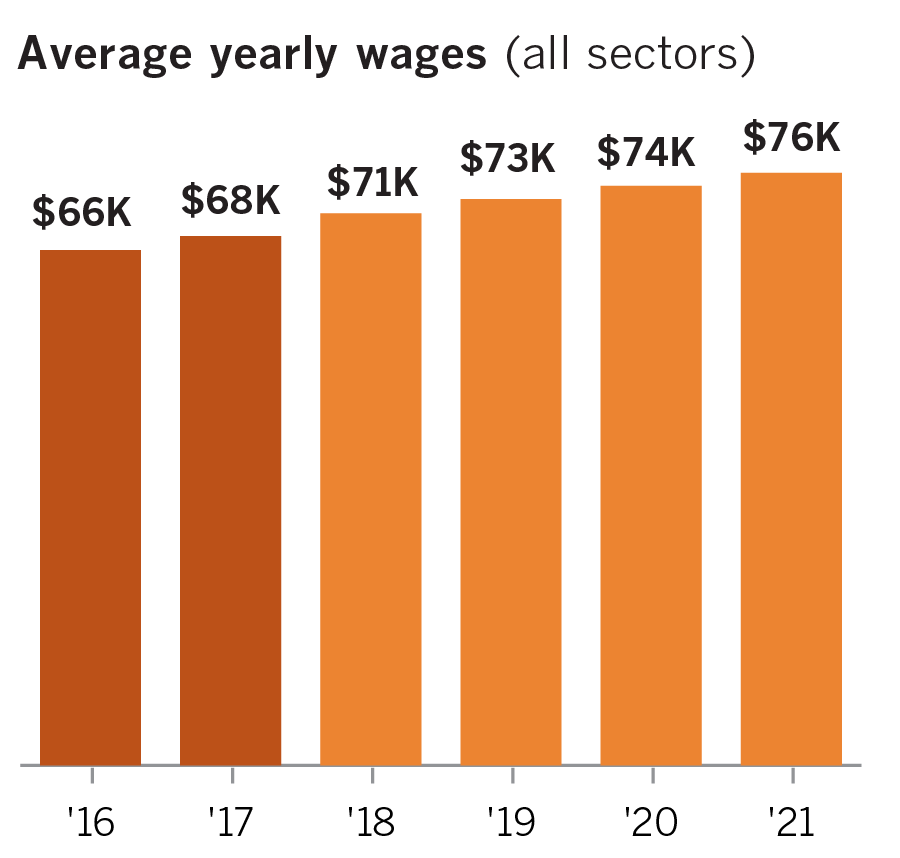
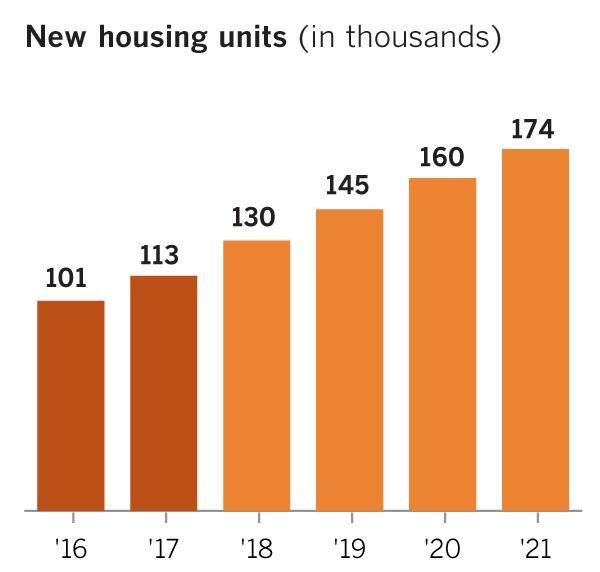
But underlying the bullish projections is a gnawing sense that the prosperous economic run has been unusually lengthy — and bound for an eventual end.
The longest national economic expansion in history was a 10-year stretch in the 1990s. The current growth, which began in July 2009, is gaining on that record. For the next governor to make it through a four-year term without a contraction, the expansion would have to last at least 12 ½ years, said Jerry Nickelsburg, an economist and director of the UCLA Anderson Forecast.
“Twelve and a half years is longer than any expansion in the U.S. economy,” Nickelsburg said. “So the next governor may well have the good fortune of not having to go through a recession — but may not.”
There are other warning signs. High housing costs are felt as acutely in most of the state’s main hubs as it is in Palo Alto, making it hard to find workers to fill open jobs. Decisions made in Washington D.C. loom large over the state’s economic outlook. President Trump’s escalating trade war with China and other trading partners has led to retaliatory tariffs on American exports, threatening to kneecap farmers or workers at California’s major ports. His oft-threatened restrictions to immigration could cut off labor to key industries such as tech or agriculture.
When the bust happens, it can be sudden and brutal. Just ask former Gov. Pete Wilson.
In the early 1990s, cutbacks in national defense after the end of the Cold War pummeled the Southern California aerospace industry. Wilson took office in January 1991 with an estimated $7-billion budget shortfall; five months later, the gap ballooned to more than $14 billion.
Little more than a decade later, Gov. Gray Davis was slammed by the dot-com bust of the early 2000s led to tax revenues cratering to the tune of $25 billion for three years.
Revenue decline was even steeper in the Great Recession: In 2009, the state lost more than $35 billion. It was left to Gov. Arnold Schwarzenegger and later Brown to pick up the pieces.
“We would get to things like Medi-Cal and I would ask my staff…we need to cut $2 billion or something,” Genest, said of trying to stanch the budget bleeding during the Schwarzenegger years. “They would say, ‘look, there isn’t any way.’
“It was just horrendous to be there,” he said. “And it will be again. Those problems are all there just waiting to resurface — and they’re getting worse.”
‘Weathering the storm’
Rural Tehama County is still smarting from the last recession. In his quest for cuts, Schwarzenegger slashed a land conservation fund that paid about $30 million to rural counties statewide — to a token $1,000 annually. Tehama’s share, which had been close to $1 million, plummeted to $12. The fund hasn’t been restored, and the county has yet to add back the staff positions it lost.
“In two words: It sucked,” Tehama County Supervisor Bob Williams said of governing during the downturn. “You’re making decisions as an elected official that affect people’s lives and affect their livelihoods.”
The county weathered the last storm through a combination of furloughs and hiring freezes, convincing public employees to shoulder a larger share of retirement costs and addressing increased demand for social services such as CalWorks with a skeleton staff. A local library narrowly escaped closing when the community rallied with bake sales and raffles and a rent break from the landlord.
Teslas or food delivery robots would look out of place in Red Bluff, the county seat. Instead, the city boasts a historic downtown, lined with Victorian buildings and anchored with an Italianate clock tower — a replica of an 1886 landmark that burned down more than 30 years ago. The sluggish pace of recovery shows in shuttered storefronts throughout the county — the slightest change in fortunes could put Tehama back on its heels.
“It wouldn’t take a recession to create a budget crisis,” said Justin Garosi, an economist with the nonpartisan Legislative Analyst’s Office. “If the stock market were to have a really poor year, if it greatly reduces the amount of revenue from capital gains — that would create a budget hole even if the regular economy were fine.”
The vulnerability stems from the state’s lopsided reliance on personal income tax — including taxes on capital gains — to fund its budget. Nearly 70% of California’s revenue comes from personal income tax, according to the Legislative Analyst’s Office. That share has steadily risen since the 1950s, while other sources of revenue, such as sales and use tax and corporate tax, have declined in significance. And personal income tax revenue is especially concentrated among the state’s top earners. In 2016, the top 1% of filers paid out nearly 46% of income tax revenue.
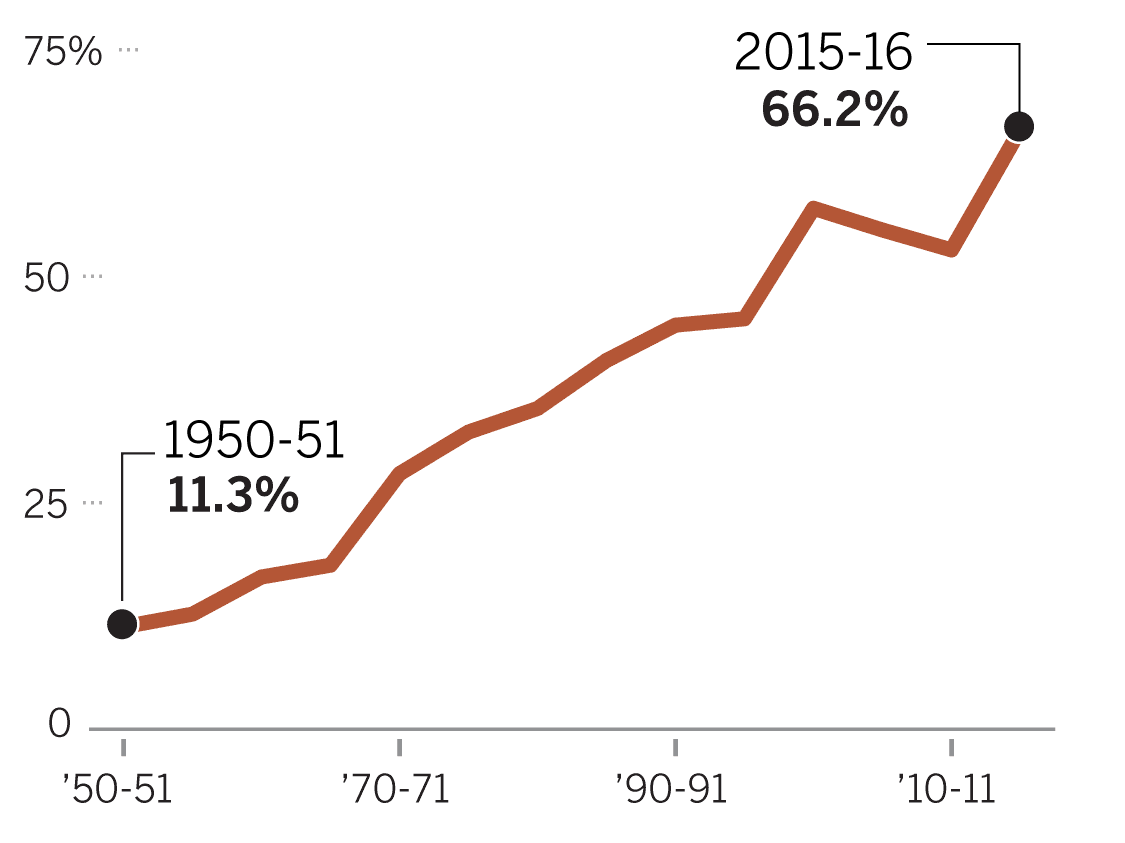
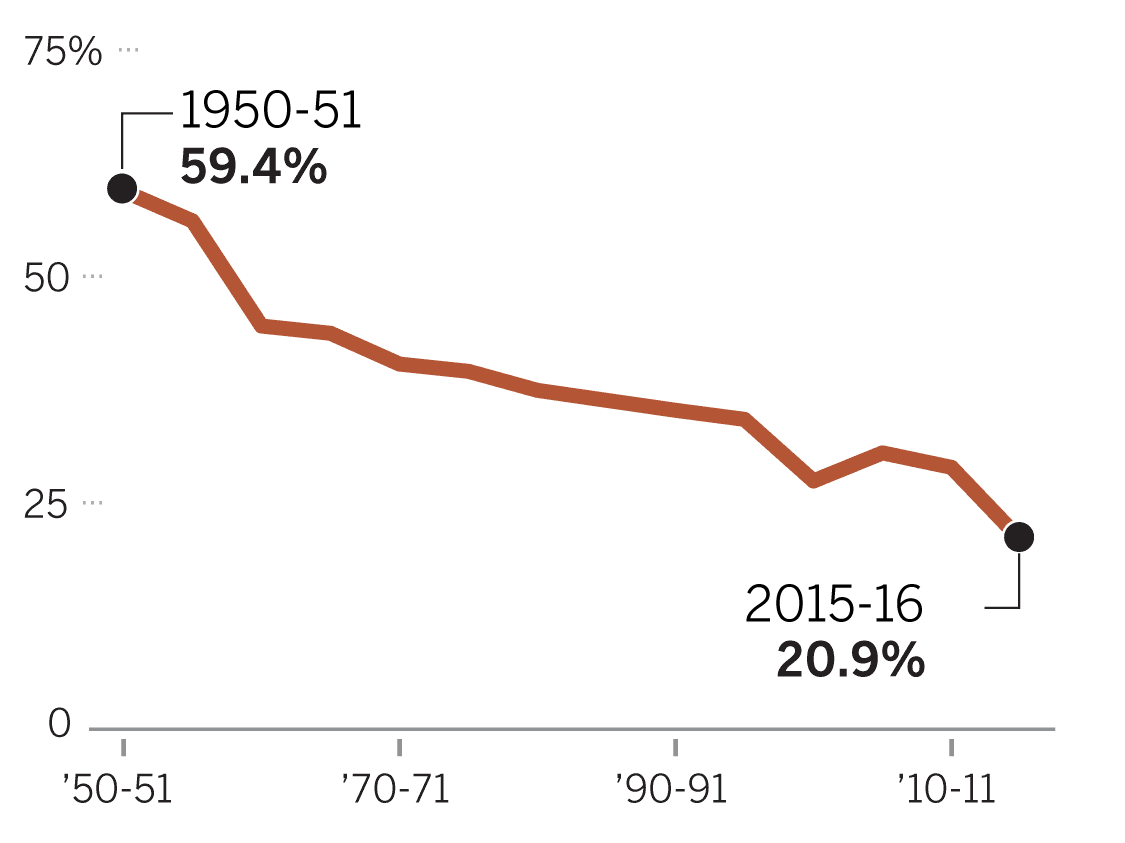
When that top 1% is doing well, the state does very well. When Facebook went public in 2012, for example, the resulting surge in capital gains revenue injected at least $1.4 billion in revenue directly associated with the initial public offering in the subsequent three years.
Some budget experts said the state could better manage the risk of relying so heavily on the wealthy.
Ana Matosantos, who served as the top budget official for Schwarzenegger and Brown, said checks on volatility include budget reserves, avoiding ongoing spending commitments, and good planning. Reducing taxes on the rich would be more stable, but would also mean less money in state coffers — a combination that would “make inequality worse,” she said.
“Progressive tax policies are reflective of the growing wealth and income inequality,” Matosantos said. “It is appropriate and fair to consider ways to calibrate tax policy to reflect the growing demands on public services caused by extreme wealth inequality. If we want a tax system that raises more revenues, we need taxes to apply where the money is.”
As governor, Brown has spouted a less optimistic view of California’s dependence on the rich.
He has relished raising alarms about unpredictability, displaying large charts at budget news conferences to show the jagged peaks and valleys of capital gains revenue over the decades.
Yet under his tenure, the state has grown more dependent on high-income earners. In 2012, he convinced voters to approve new income taxes on the wealthy — starting with those earning $250,000 a year — as well as new sales taxes to stave off billions in cuts to education.
Key to that successful campaign was the promise that those taxes would be temporary. But in 2016, labor groups representing teachers and public employees were victorious in their push to extend the income taxes until 2030. The tax rates generate up to $9 billion in additional revenue each year, enabling the state to spend more on programs.
To guard against budgetary whiplash, Brown has preached limiting spending on new programs, leading to perennial battles with legislators. He also championed a revamped rainy day fund, sequestering a portion of capital gains revenue that is above historic norms.
By next summer, the state’s cash reserves will total $15.9 billion, with the vast majority socked away in that fund.
That would provide some cushion in the next recession, but stop short of fully taking the sting out of a downturn. The Legislative Analyst’s Office estimates that a mild recession would lead to a $40-billion decline in revenues, leading to a $20-billion deficit. A moderate recession could slash revenues by $80 billion, leading to a $40-billion shortfall.
“Is [the rainy day fund] going to obviate or eliminate the need for any budget reductions in the next recession? No,” said H.D. Palmer, spokesman for Brown’s Department of Finance. “Is it going to mitigate it? Yes.”
A sweeping overhaul of California’s tax structure could make the state’s revenues less volatile, but it would also mean imperiling a herd of sacred cows.
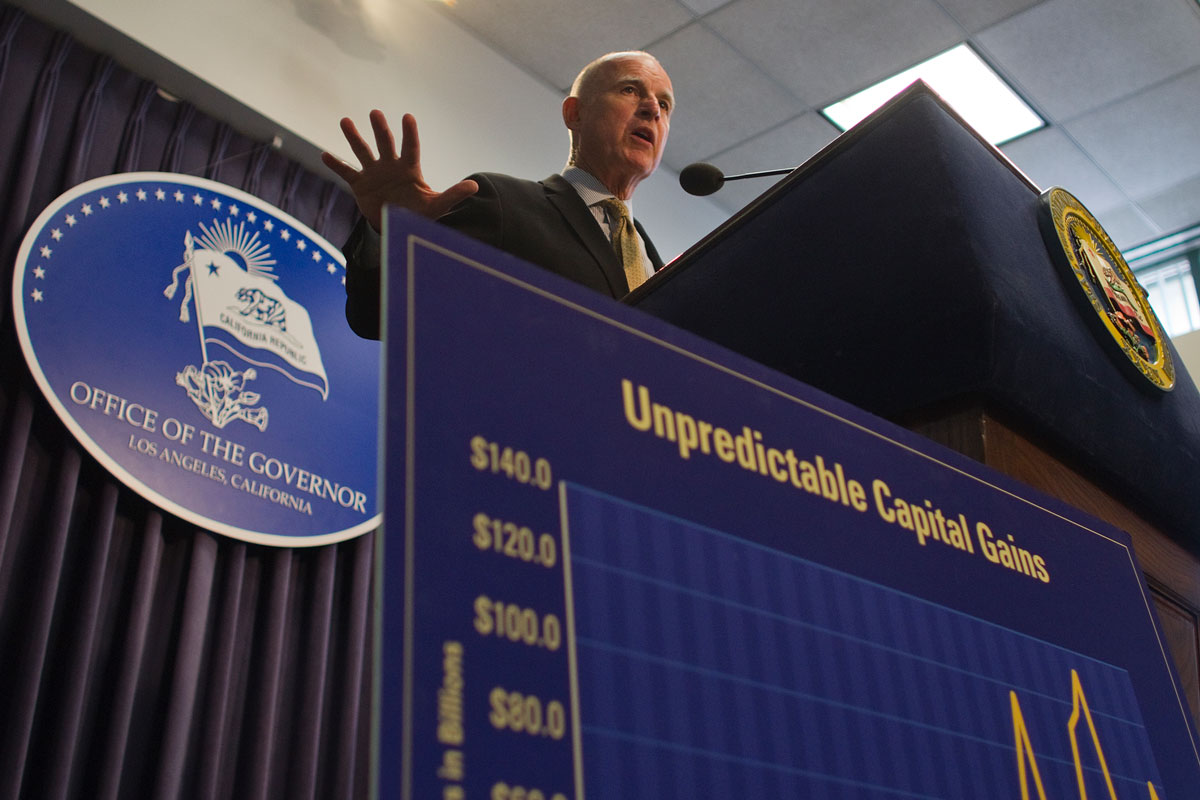
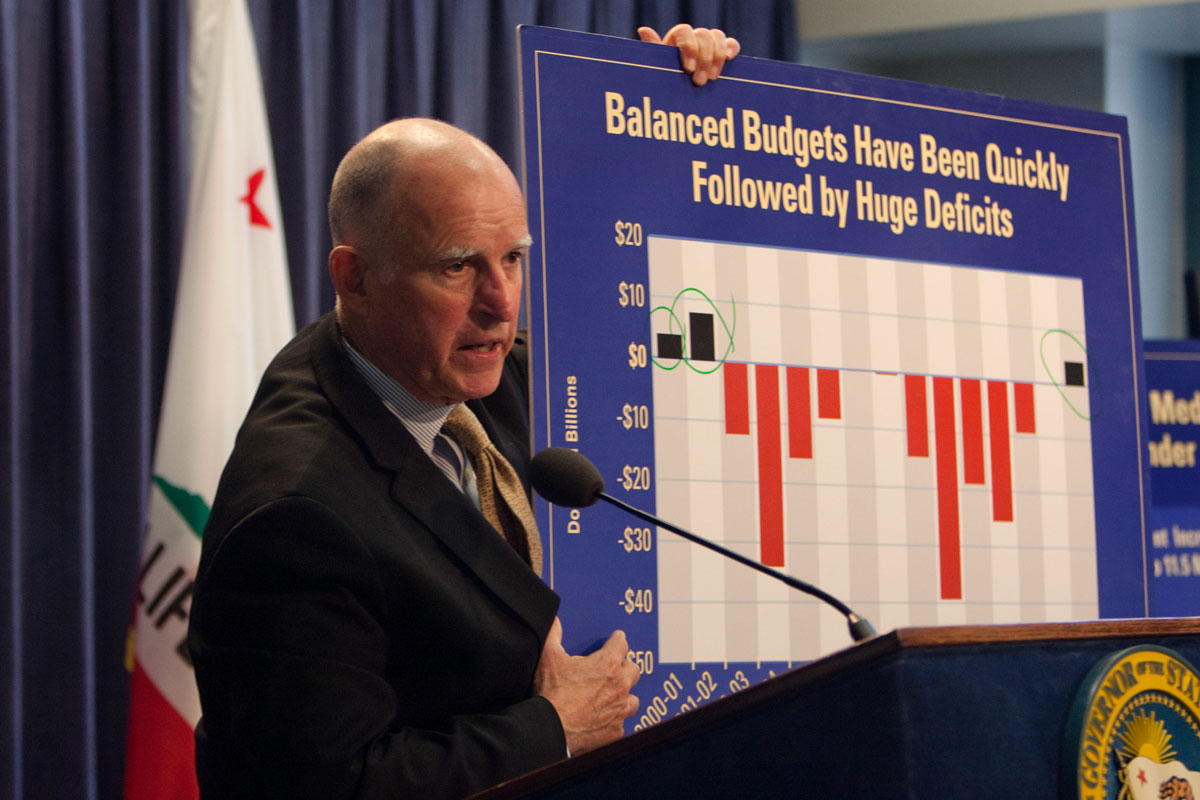
Broadening the tax base would shift the dependence away from high-income earners, but would in turn put an additional burden on low- and middle-income residents — an unpopular prospect anywhere, but particularly in liberal California.
Revisiting Proposition 13, the landmark 1978 initiative that slashed property taxes and capped the annual increase in assessments for residential and commercial properties, could mean a gusher of revenue to local governments and schools, easing the need for the state to spend so heavily in those areas. But the law, particularly on residential taxes, remains politically untouchable, at least for now.
A handful of options have long been under consideration in Sacramento. State Sen. Bob Hertzberg (D-Van Nuys) has repeatedly called for a sales tax on services. A partial revision of Proposition 13 — a so-called “split roll” that would tax commercial properties based on market value, instead of purchase price — has gained popularity in liberal quarters and may be on the ballot in 2020, but it faces stiff resistance from business interests. Environmentalists have encouraged a tax on extraction from California’s oil or natural gas reserves, a move fiercely opposed by oil companies.
While both gubernatorial candidates have gingerly talked about taxes, neither has made the issue a focus of his campaign. Republican John Cox has called for slashing the personal income tax, and reducing state spending along with it. Democrat Gavin Newsom has said he’s open to exploring tax reform, including broadening the sales tax, so long as it gets approval from voters.
Policy and political experts say true overhaul would require a combination of multiple proposals, spreading the pain evenly among interest groups.
“Getting real tax reform done would be the political unicorn of policy change,” said Dana Williamson, a Democratic consultant and Brown’s political adviser. “It would take a lot of money, a coalition of competing interests and a popular governor willing to make this their top priority at a time when voters aren’t clamoring for change.”
The clamor certainly isn’t coming from Palo Alto. Residents of the 94301 ZIP Code have voted overwhelmingly to impose higher taxes on themselves, with roughly 64% backing Proposition 30 in 2010 and 61% supporting Proposition 55 four years later.
Nor does there seem to be a real fear of being able to ride out any coming economic storms.
“In many ways people take it for granted,” said Keene, the city manager, of the current prosperity. “There’s a kind of faith that we can transform ourselves as needed.”
Out in Tehama County, however, Williams’ outlook is less cheerful. He worries about the county’s growing pension obligations, the more than 40% of residents relying on Medi-Cal and local walnut farmers who fear the effects of Trump’s tariffs.
“We’re going to get hit. We see it coming,” Williams said. “Any time we have a little bit of extra, we shove it over to an economic uncertainty account because we’ve been there before. But I don’t know if we have enough to withstand if a big economic crisis hits us.”
The Times wants to hear from you. What issues do you think will define California’s next chapter? Tell us here.
Sept. 24, 12:15 p.m.: This article was updated to remove an image that incorrectly located the home of Steve Jobs, the late CEO of Apple.
Credits: Design and development by Priya Krishnakumar



